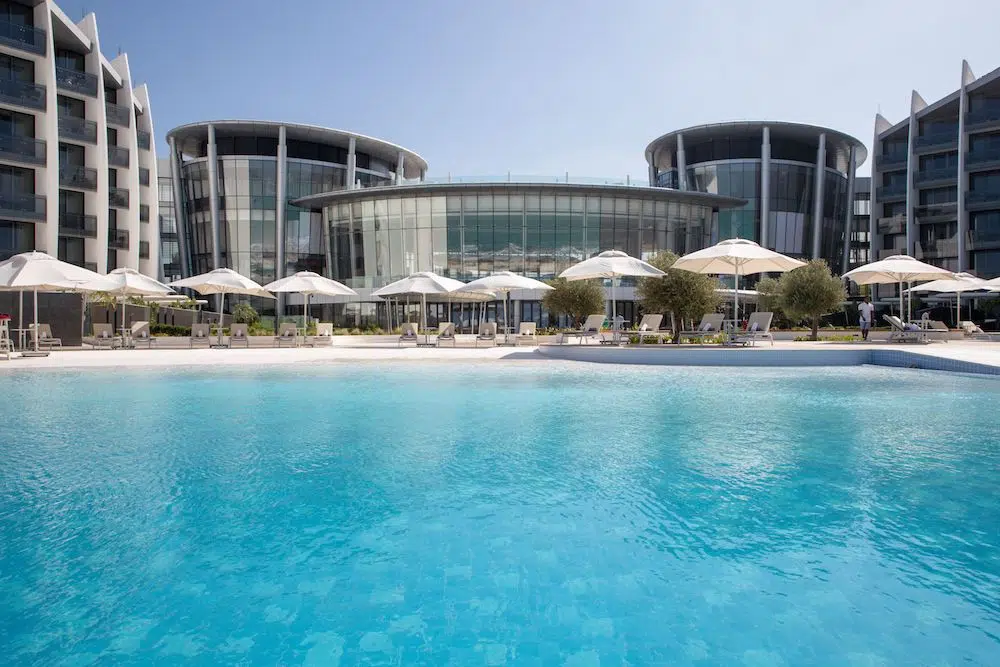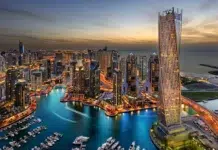Abu Dhabi, the capital of the United Arab Emirates, rises with a skyline of modern architecture where golden desert sands meet the turquoise waters of the Persian Gulf. Known for its wealth and culture, the city offers a mix of beach escapes, urban experiences, and desert adventures. This guide explores Saadiyat Island, Abu Dhabi’s cultural landmarks, and the Empty Quarter’s luxury resorts.
Saadiyat Island: Beach and Culture
My first stop is the pristine shoreline of Saadiyat Island. This island blends white-sand beaches with cultural attractions and luxury resorts. It is also home to the Louvre Abu Dhabi, the anchor of what will become a full museum district.
I stayed at the new Jumeirah at Saadiyat Island Resort, a low-rise property with a modern Arabian design. My guestroom featured floor-to-ceiling windows and a balcony overlooking three pools, protected dunes, and the Arabian Gulf. At night, I dined at TEAN, the resort’s Levantine-inspired restaurant, where grilled seafood flavored with za’atar paired perfectly with Lebanese wine and the sea breeze.
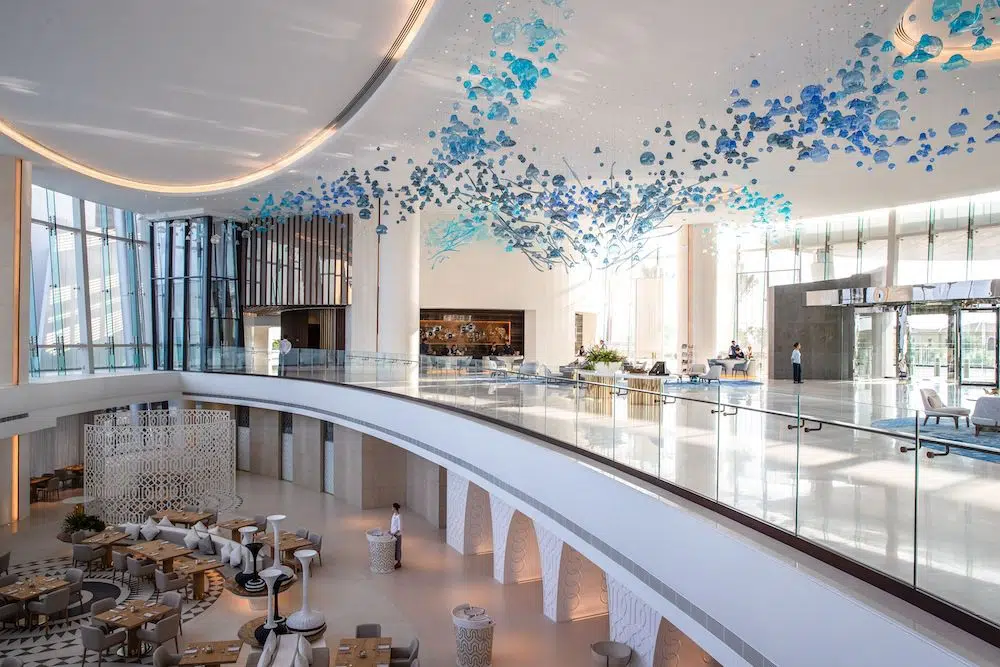
The next morning began with dolphins spotted offshore, followed by a visit to the Louvre Abu Dhabi. Its collection of art and artifacts traces connections across cultures. Still, it was Jean Nouvel’s architecture that left the deepest impression. As sunlight filters through the dome, a “rain of light” creates a canopy reminiscent of a desert oasis.
City Life at the Abu Dhabi EDITION
To experience city life, I checked into the Abu Dhabi EDITION, located in the stylish Al Bateen Marina. Curated by Ian Schrager, the hotel feels like a private social club with its atrium, suspended artwork, and furnishings by Emirati designer Latifa Saeed. My room featured herringbone floors, desert photography, and a balcony with skyline views.
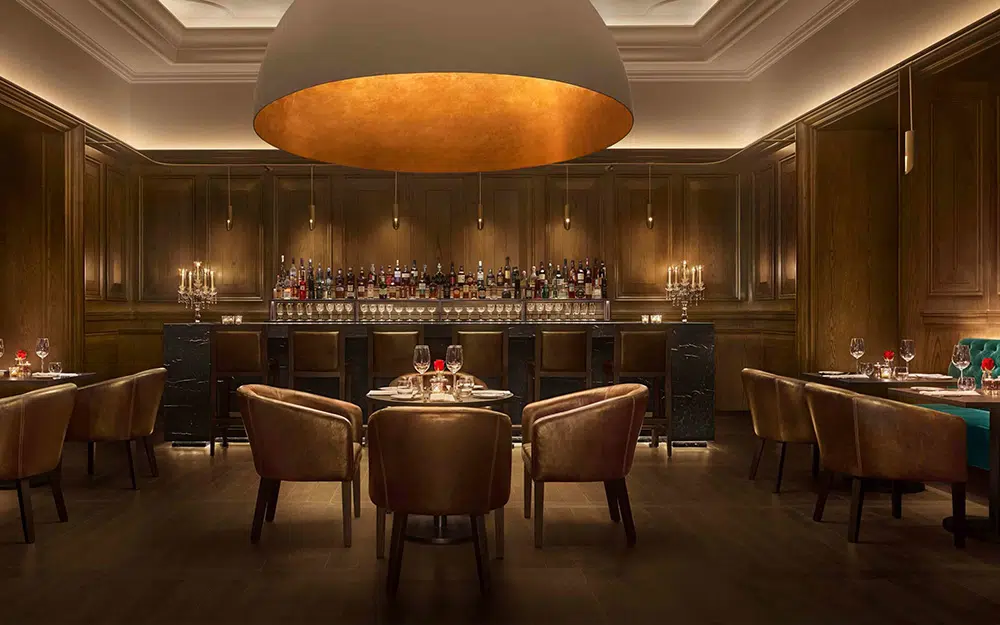
Evenings were vibrant. At the Library Bar, a velvet-lined lounge, I enjoyed cocktails before dinner at the Oak Room, a modern British steakhouse by Tom Aikens. Highlights included Wagyu beef and the unique experience of a “meat sommelier.”
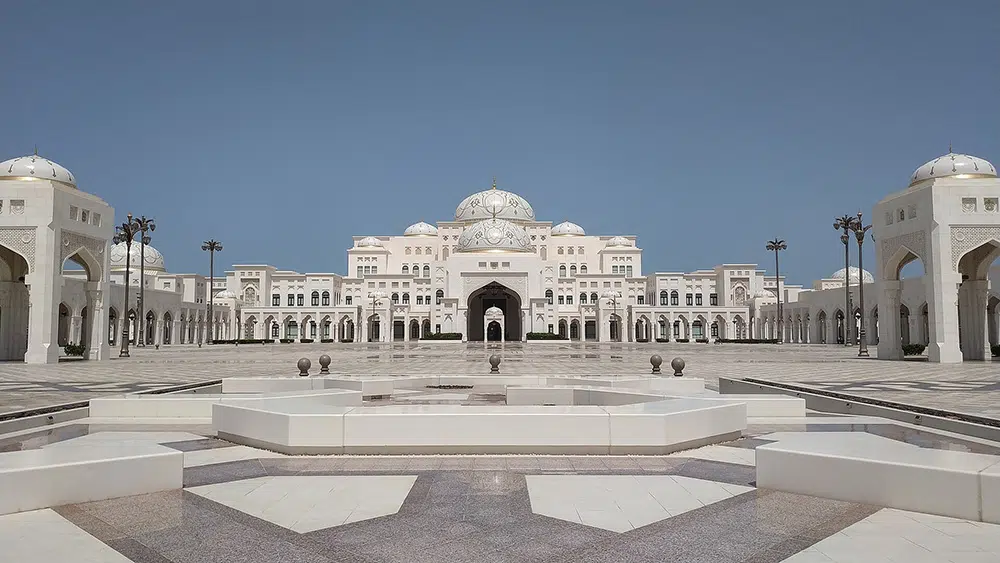
Nearby, I visited Qasr Al Hosn, a 1700s fort turned museum that chronicles Abu Dhabi’s history and the life of Sheikh Zayed. Later, Qasr Al Watan, inside the Presidential Palace compound, revealed ornate Arabian halls and exhibitions celebrating Arab contributions to science, art, and literature.
Desert Dreams: Qasr Al Sarab Resort
A two-hour drive led me from the city to the Rub’ Al Khali Desert, the largest sand desert in the world. Hidden within the dunes is Qasr Al Sarab Desert Resort, a property that feels like a mirage from an Arabian tale. Its winding seven-mile approach only heightens the anticipation.
My room overlooked endless dunes, with a shaded veranda perfect for escaping the 110-degree heat. Activities included camel treks, dune walks, and falconry. I joined a desert drive through the resort’s reserve, where Land Cruisers scaled sand dunes at thrilling angles. As the sun set, we paused for photos and toasted the evening with champagne.
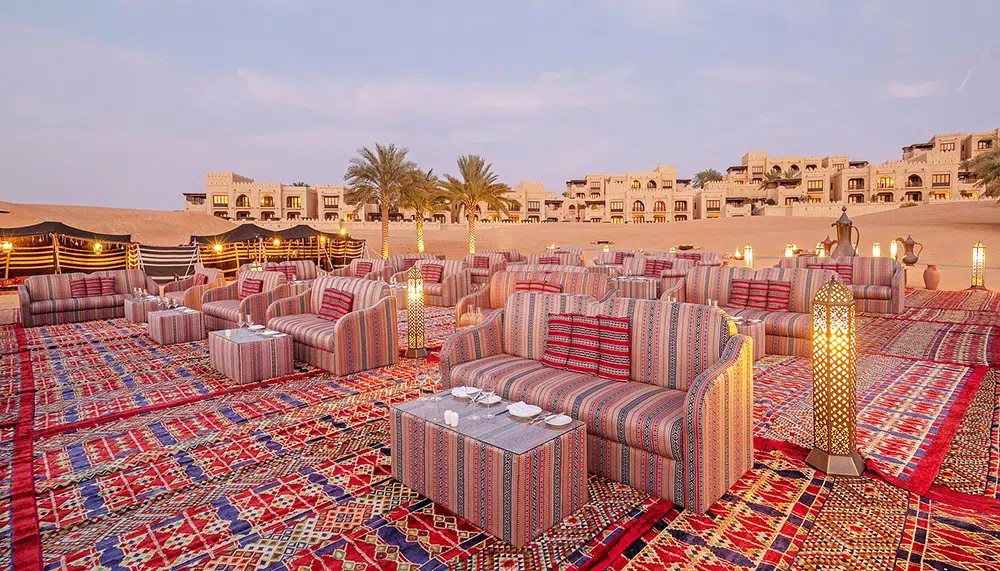
Dinner at Al Falaj, the resort’s Bedouin-style restaurant, closed the night. Dining on carpets under the stars, with grilled lamb and traditional dishes, was the perfect finale to my desert stay.
Practical Travel Information
-
Flights: Etihad Airways offers nonstop service to Abu Dhabi from major U.S. and Canadian cities. U.S. travelers benefit from Immigration Preclearance at Abu Dhabi International Airport. More details: www.etihad.com.
-
Hotels:
-
Jumeirah at Saadiyat Island Resort: +1-877-854-8051 | reservations@jumeirah.com
-
Abu Dhabi EDITION: +971 2 208 0000 | reservations.auh@editionhotels.com
-
Qasr Al Sarab: +971 2 886 2088 | infoqas@anantara.com
-
-
Tours & Activities: Learn more at the Department of Culture & Tourism Abu Dhabi.
Conclusion
Abu Dhabi may be known for oil wealth, but its true riches lie in its cultural landmarks, pristine beaches, and desert luxury retreats. From Saadiyat Island to Qasr Al Sarab, the emirate offers travelers an unforgettable mix of heritage, adventure, and indulgence.

